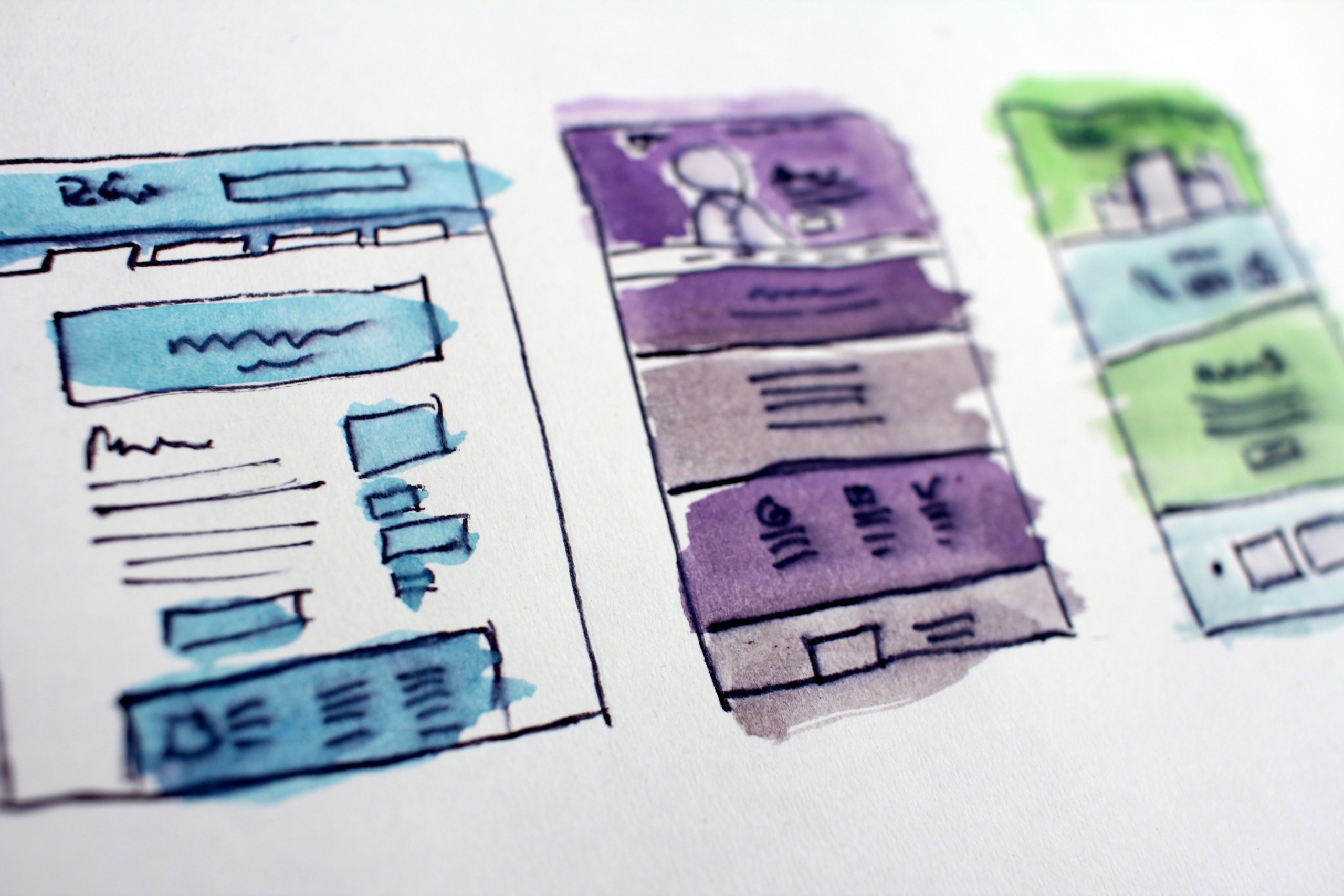It seems as if everyone on the internet has an opinion about landing page length.
Some claim shorter is better, while others swear by long.
But the truth is, one is not better than the other. They are both valuable — but only if you understand when to use one over the other.
In this article, I’m going to show you exactly how to determine the length of your landing page in seconds. Yes, seconds.
You don’t need to do a bunch of research or spend hours mapping out your page. You just need to know a couple of things about your target audience and you’ll have your answer in an instant.
Let’s dive in.
#1: Your target audience
At the simplest level, the length of your landing page should be determined by two things:
(1) Your target audience
(2) The type of product you’re selling
In terms of your target audience, it doesn’t matter what you’re selling or who you’re selling it to. The only things that matter are:
- Stage of Awareness — How familiar is this person with your product?
- Level of Intent — How likely are they to take action?
Why are Stage of Awareness and Level of Intent so important?
A visitor’s Stage of Awareness and Level of Intent indicate how much copy you may need to move a visitor from one stage of the sales funnel to the next (which is the true goal of any landing page).
Take a look at the visual below from copyhackers to get a sense of how a visitor’s position in the sales funnel directly influences copy (and therefore, the length of your landing page):

As you can see, the more unfamiliar someone is with your brand/product, the more copy you’ll need to move them to the next stage of the sales funnel. The more familiar, the less copy you’ll need. The same goes for intent — the higher someone’s intent, the less copy you need to convert them (and vice versa).
Beyond Awareness and Intent, another important indicator to pay attention to is Referral Source, or how your visitor is getting to your landing page.
The Referral Source not only tells you where the lead is coming from, but it can also give you clues about a visitor’s Stage of Awareness and Level of Intent, which you can see in the chart below:
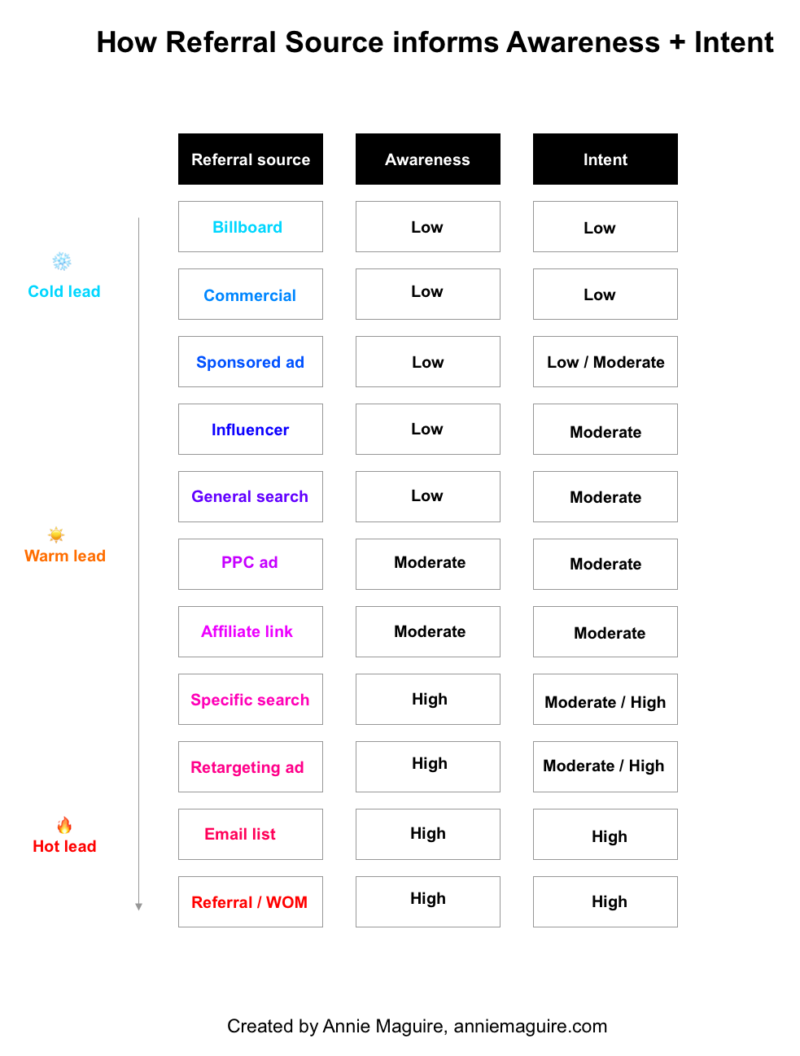
As you can see from the chart above, direct referrals (i.e. – people on your email list or a referral from a friend), who are closer to the bottom of the sales funnel, have a much higher level of awareness and intent as compared to someone who is higher up in the funnel (i.e. – someone who randomly sees a YouTube ad for your brand).
Keep in mind, this VARIES by brand, product, marketing strategy, etc, but hopefully this chart givens you a better sense of how these various components are related.
Now that we’ve covered how your audience will influence the length of your landing page, let’s cover the other piece of the puzzle: Your Product.
#2: Your product
Another factor that may influence the style and length of your landing page is the product you’re selling.
Keep in mind, this is very much a “secondary” consideration (after stage of awareness, level of intent, etc) but it is something to consider (or at least be aware of) nonetheless.
Below I’ve compiled various product types and industries that may benefit more from short landing pages vs long landing pages. This is by no means a list of rules, but just some general trends I’ve seen throughout my years as a freelancer.
When to consider shorter landing pages…
Low-barrier digital offers
If you’re offering a free webinar, free eBook, free report, etc, a shorter landing page (aka a Squeeze Page) is likely the right choice for you. This is especially true if the person is coming from your mailing list and is already familiar with you and your products/services.
I found this example here, but I believe it came from David’s brand here.
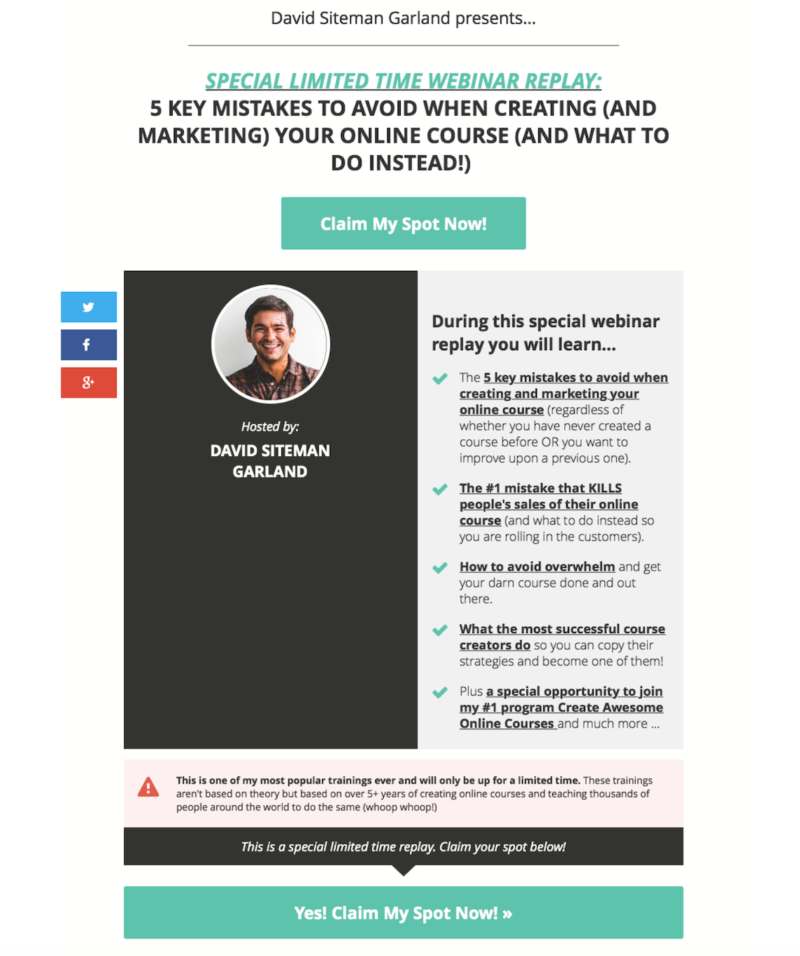
Fashion / Clothing
Fashion is a maverick category in that clothing brands don’t typically (or ever?!) use traditional landing pages to sell goods. Instead, they rely on short, conversion-optimized product pages that lead with product.
This makes sense, as when it comes to shopping, people want to see the product first and if they like it, THEN they’ll scroll to learn more about the product, brand, check out reviews, etc.
In the example from H&M below, you’ll notice the page is pretty short — it leads with the product, price, colors and sizing, followed by some light product points. There are some links to similar products, but as you can see, it’s not too long or content-heavy.
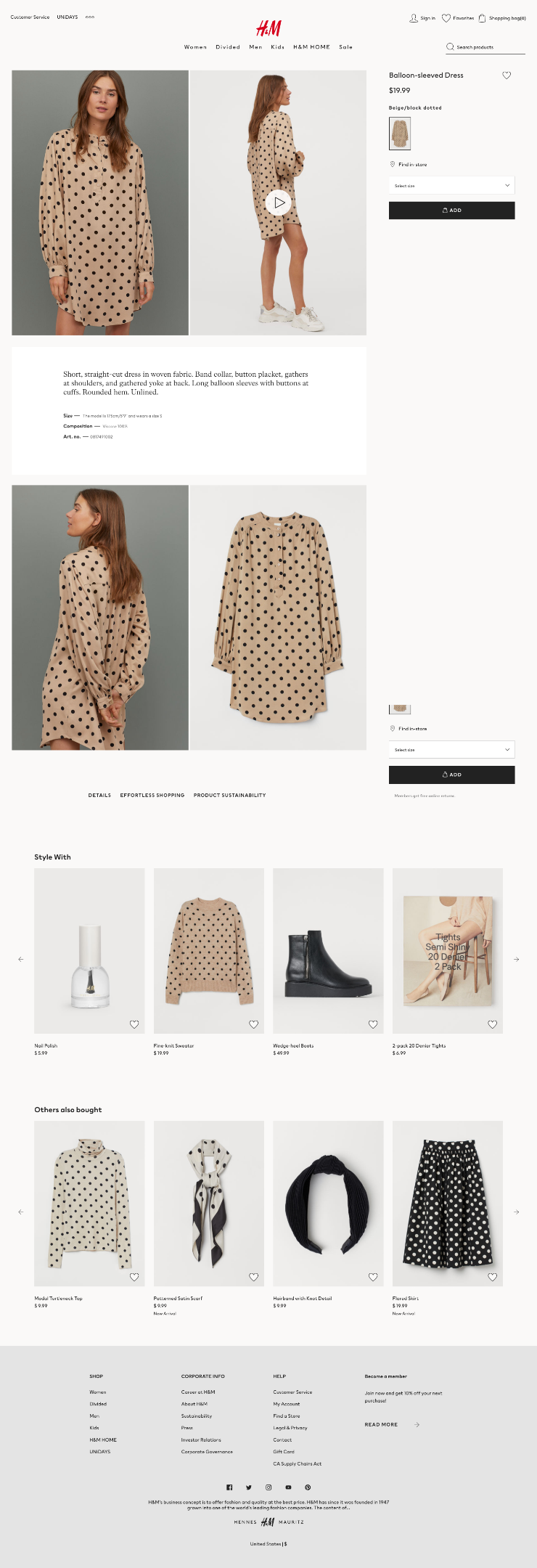
Apps
The goal of most apps is to get people to download, so keeping the copy short, sweet, and focused on sending them to the app store (or whatever action is required) is usually the way to go, like this landing page for interested Lyft drivers.
Keep in mind, Lyft is also a highly established brand, so it makes sense that they would have shorter landing pages with less copy.
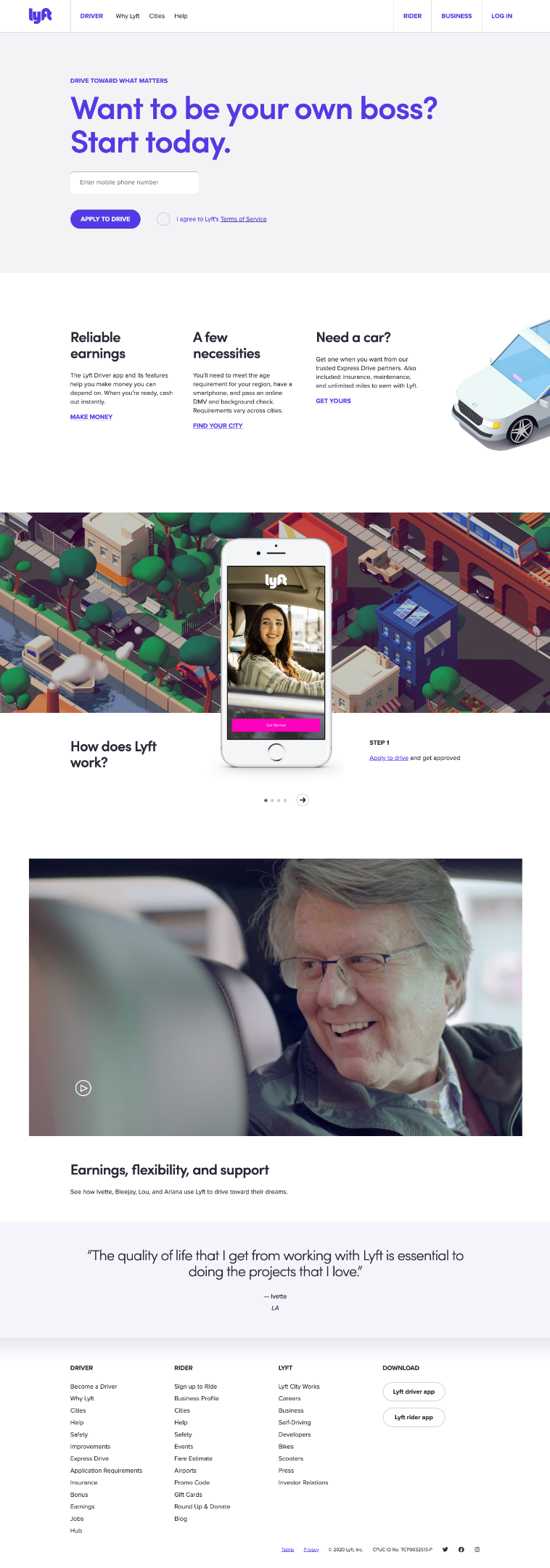
When to consider longer landing pages…
High-barrier digital products/services
Online courses, books, or services that require a significant financial and/or time investment tend to benefit from longer landing pages that offer plenty of persuasive copy, an in-depth description of what’s included, information regarding guarantees, social proof, and a lot more.
The example below is a landing page for 10x Freelancer, a course offered by Copyhackers.

Expensive / Luxury products
In general, there tends to be a correlation between the price of a product and the length of the landing page. The pricier the item, the more sales copy, visuals, etc.
This isn’t always the case, especially with very “high fashion” items where people are buying into the brand/look, not the sales copy. Check out this example below from Rolex to see what I mean.

Innovative products
Products that are brand new to people, for example, a menstrual cup from Sustain or period underwear from Thinx, may require more selling (and therefore, more content and a longer landing page) than something more common and easily accepted, like tampons or pads.


Software
In general, software tends to be more technical and complex than say, a pair of shoes, so it’s more likely that you’ll need a longer, more robust landing page to help explain or visualize features, provide proof points, etc.
The example below is from my client, Podia, which focuses on their Online Course feature. I chose to treat their feature pages in an “FAQ” style that would address common questions while also giving us a chance to show off the product and examples.

Medical / health
Similar to software, products in the medical/health field tend to need more explaining, scientific proof points, visuals, videos, etc, which can result in a longer, more robust landing pages. To show you what I mean, here’s an example of a specialty-specific landing page from one of my medical clients, Hudson Wellness.

Education
Similar to the examples above, educational products also tend to have longer, content-heavy landing pages, like this example from Rosetta Stone that’s targeting businesses.

Ready to create your next landing page?
As you’ve learned, choosing between a short, medium, or long landing page is not guesswork or a matter or personal preference.
It truly comes down to where the visitor is coming from and where they are in the sales funnel.
Yes, the type of product you’re selling does matter, but there’s no reason you can’t break the “rules” listed above and try a short landing page for software or a long landing page for a sweater.
Ultimately, it’s about taking the information you have about your customer, coming up with an idea to test, and putting it out into the world to see what happens.
If you’d like to work together on your next landing page, feel free to check out my landing page services here (coming soon!) or reach out to me directly: annie1maguire@gmail.com.
